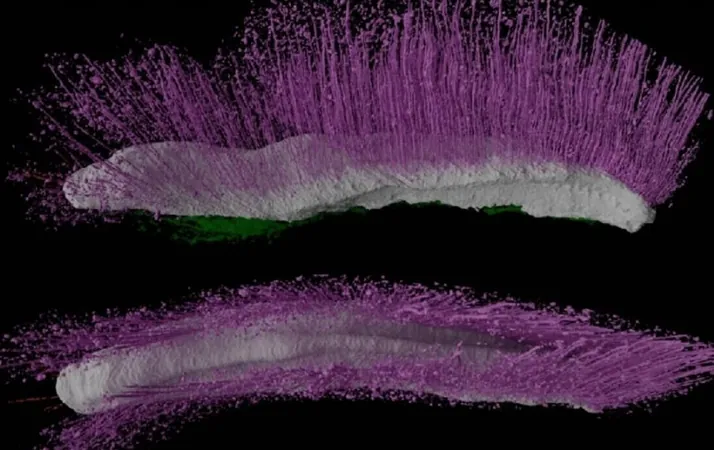
Ancient Mollusks with a Punk Rock Twist are Redefining Our Understanding of Evolution
2025-01-21
Author: Mei
LONDON — Imagine unearthing ancient sea creatures with a style reminiscent of punk rock rebels!
Researchers stumbled upon two astonishingly preserved mollusks dating back 430 million years ago in England, and their peculiar spiny appearances led to the playful yet fitting nicknames "Punk" and "Emo." Surprisingly, these funky fossils not only resemble the edgy hairstyles of punk rock culture but have also transformed the scientific narrative surrounding early animal evolution.
An international study featured in Nature dives deeper into these prehistoric marvels.
Scientist Dr. Mark Sutton from Imperial College London, leading the research, explains, “Punk and Emo were our initial terms of endearment for these unique mollusks, inspired by their distinct features. Punk, with its rebellious, spiky look, just begged for that name, while Emo perfectly matched its vibe.”
Formally known as Punk ferox and Emo vorticaudum, these creatures belong to an ancient group called Aculifera.
This group serves as distant relatives to modern chitons—those oval-shaped shellfish often found clinging to rocky substrates. Mollusks, one of the most diverse animal groups today, are well-studied, yet Aculiferan mollusks from this epoch have remained somewhat of a mystery. For years, researchers had considered them simple and primitive due to the scarcity of fossil evidence.
However, this groundbreaking discovery challenges that notion profoundly.
By utilizing advanced imaging technologies, scientists delved into the relics without causing damage. They employed high-powered X-ray scanning to visualize the internal structures and meticulously sliced the fossils into microscopic layers to take detailed photographs, crafting intricate 3D models that opened a treasure trove of information about these ancient life forms.
What’s remarkable is the exceptionally preserved state of these fossils, which reveal intricate details of soft tissues.
Dr. Sutton notes, “We’ve created what we call ‘virtual fossils’—3D digital snapshots that provide insight into their biology and behavior.”
The analysis has unveiled intriguing details about their lifestyles.
Both Punk ferox and Emo vorticaudum feature smooth undersides, implying they inhabited the ocean floor. Emo vorticaudum was found in a folded posture, suggesting it may have navigated its world similarly to an inchworm, using its spines to grip and propel itself forward—an extraordinary movement strategy not previously shown in any known mollusks. Meanwhile, Punk ferox exhibits unique characteristics, such as a ridge-like foot structure that seems to have no counterpart in modern mollusks.
Both creatures showcase an eclectic mix of anatomical traits.
While Punk ferox resembles a worm-like mollusk with its long spines, it also shares features like a broad foot and gills similar to contemporary chitons. On the other hand, Emo vorticaudum combines a spiny, worm-like form with shell plates and a compressed body akin to chitons, highlighting an evolutionary experimentation that speaks to the complexity of life in ancient seas.
This remarkable discovery not only sheds light on the evolution of mollusks but also emphasizes how our understanding of ancient biodiversity continues to evolve.
As research progresses, who knows what other surprises these ancient artists of the sea may unveil? Get ready, world—science is striking a punk rock pose with these 430-million-year-old fossils!




 Brasil (PT)
Brasil (PT)
 Canada (EN)
Canada (EN)
 Chile (ES)
Chile (ES)
 Česko (CS)
Česko (CS)
 대한민국 (KO)
대한민국 (KO)
 España (ES)
España (ES)
 France (FR)
France (FR)
 Hong Kong (EN)
Hong Kong (EN)
 Italia (IT)
Italia (IT)
 日本 (JA)
日本 (JA)
 Magyarország (HU)
Magyarország (HU)
 Norge (NO)
Norge (NO)
 Polska (PL)
Polska (PL)
 Schweiz (DE)
Schweiz (DE)
 Singapore (EN)
Singapore (EN)
 Sverige (SV)
Sverige (SV)
 Suomi (FI)
Suomi (FI)
 Türkiye (TR)
Türkiye (TR)
 الإمارات العربية المتحدة (AR)
الإمارات العربية المتحدة (AR)